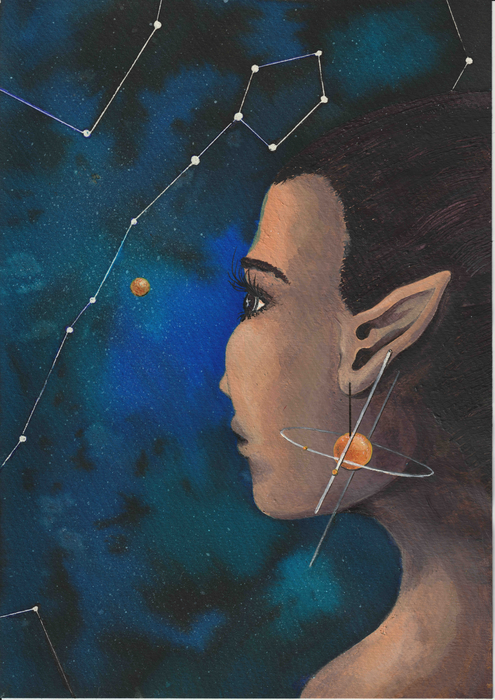
One of the useful things about our solar system is that all the planets and a lot of the smaller bodies orbit in a plane around our Sun’s equator. We get a nice view of the Sun spinning; planets and asteroids are easy to find with a big enough telescope. Mobiles are easy to make, and graphics are easy to draw.
Not all solar systems are like this, it turns out. In a new paper appearing in Astronomy & Astrophysics, researchers describe the right-angle planets orbiting the star HD3167. This system has three known planets. While the innermost world, a 5 Earth-mass rocky world, orbits where expected every 23 hours, the other two planets – two Neptune-sized planets – found their way into orbits at right angles to the star’s rotation and the orbit of the inner super earth. They are much further out, with orbital periods of 8.5 and 29.8 days.
Detecting this odd alignment required the combined efforts of some of the most precise instruments in the world: the ESPRESSO instrument on the Very Large Telescope in Chile. According to team member Vincent Bourrier: We needed a maximum of light and a very precise spectrograph to be able to measure the signal of such a small planet…Two conditions that are met by the precision of ESPRESSO, combined with the collecting power of the VLT.
The star HD3167 is a smaller orange star. It’s not as small as a red dwarf, but it still is just 86% the size of the Sun. It’s thought this star may have a hard-to-find companion that, over time, has moved those two more outer worlds into their weird alignments. That missing possible companion is the target of new search efforts, as researchers work to understand this system.
More Information
UNIGE press release
“The Rossiter–McLaughlin effect revolutions: an ultra-short period planet and a warm mini-Neptune on perpendicular orbits,” V. Bourrier et al., 2021 October 27, Astronomy & Astrophysics




 Join the Crew!
Join the Crew!
 Escape Velocity Space News
Escape Velocity Space News
0 Comments